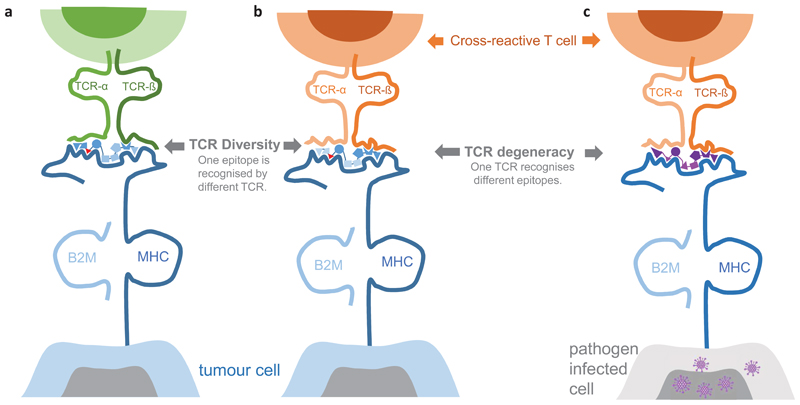Figure 3. TCR diversity and degeneracy.
A neoepitope (blue, mutant amino acid red) can be recognised by different T cells with molecularly different TCR alpha and beta chains (left, middle). The TCR/neoepitope contact residues (dark blue) may differ for individual T cells that recognise the same neoepitope. This is in particular the case for neoantigens resulting from a mutation that converts a non-binding wild type peptide into a binding mutant peptide. Also, a single TCR can recognise unrelated MHC peptide epitopes (right). For example, a T cell primed against a pathogen-derived epitope (purple) may cross-recognise a neoepitope presented on a tumour cell. MHC: major histocompatibility complex; TCR: T-cell receptor, B2M: Beta-2-Microglobulin.

